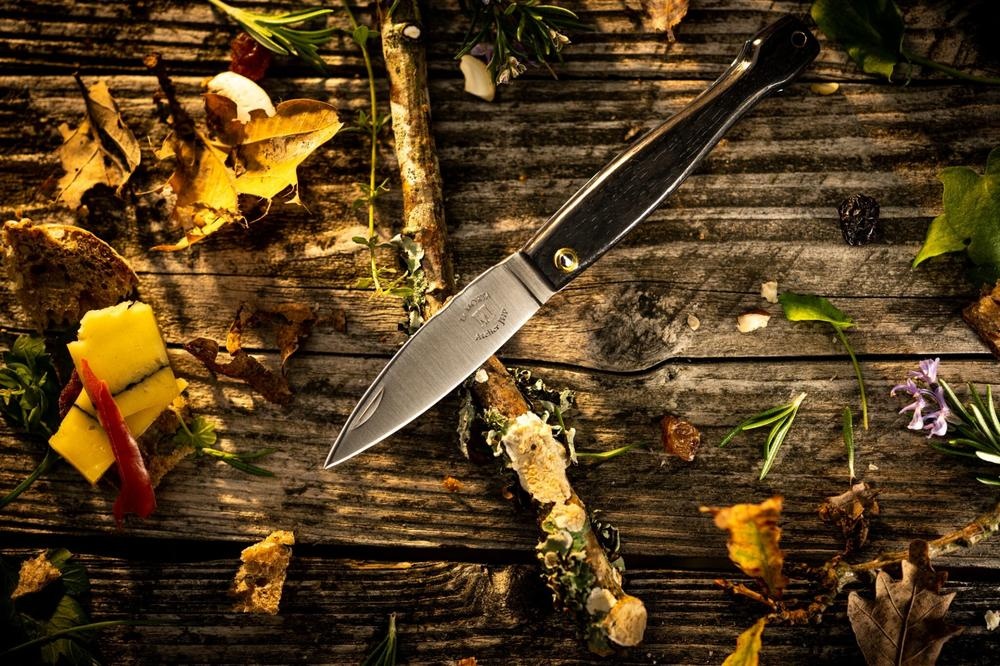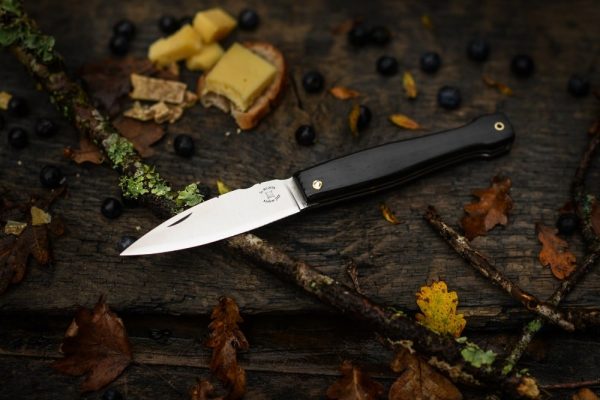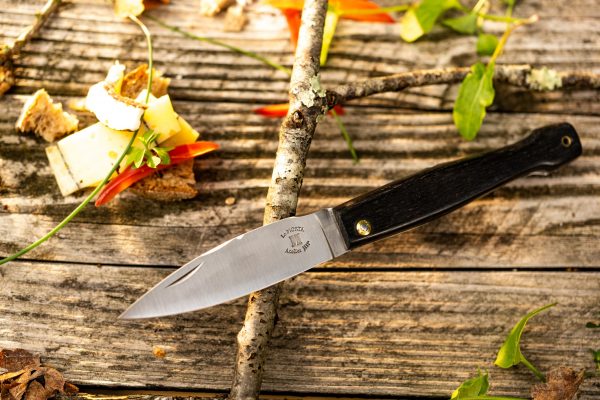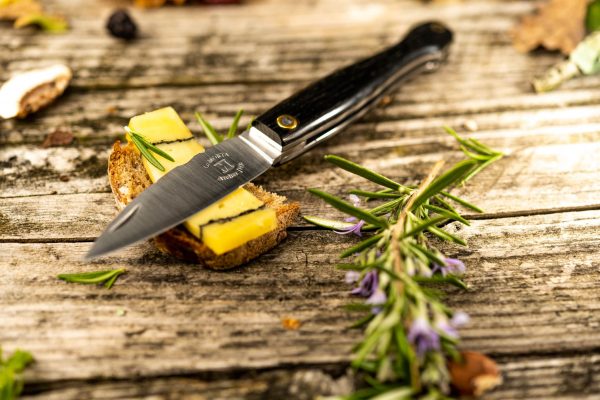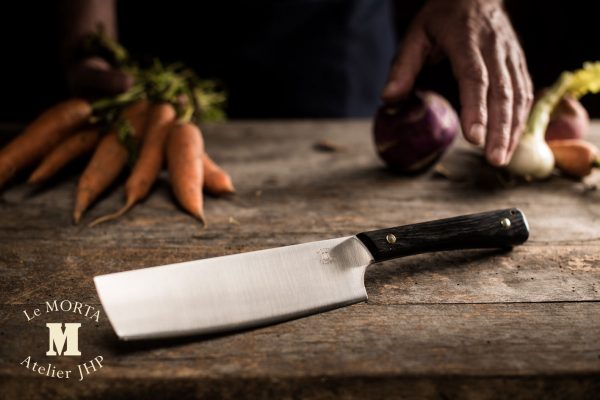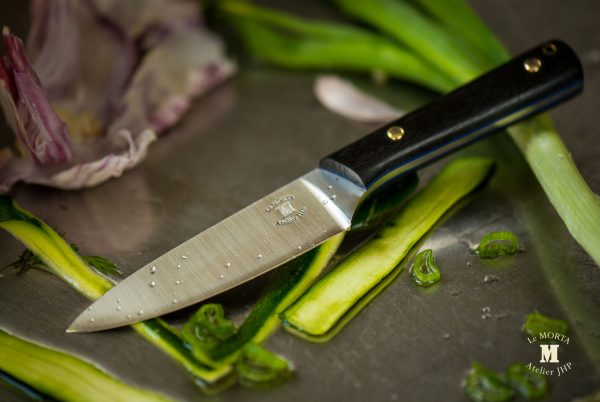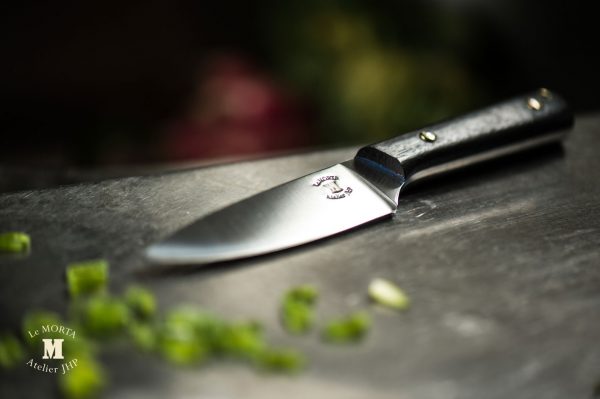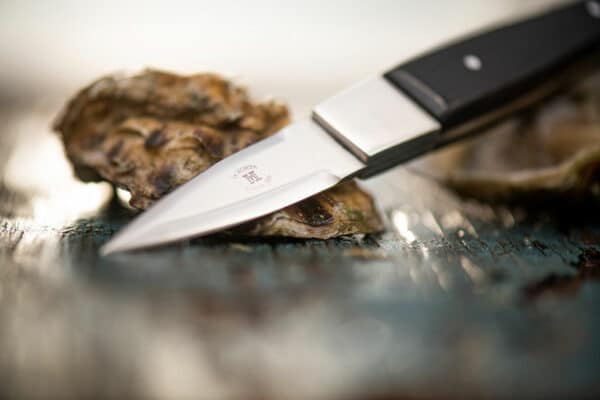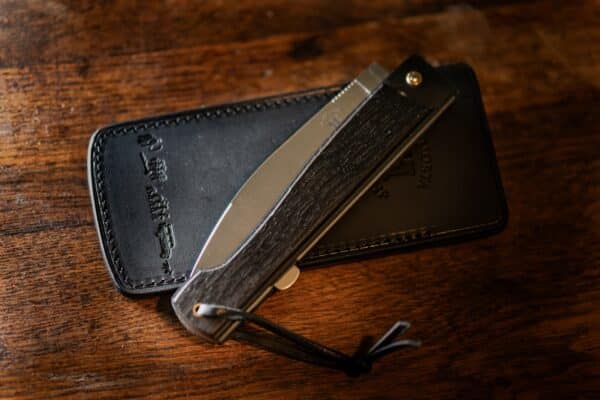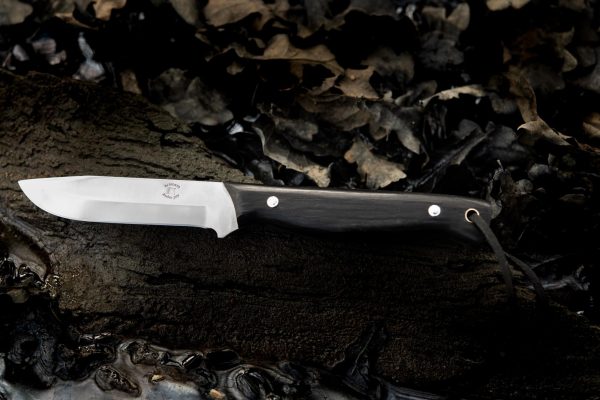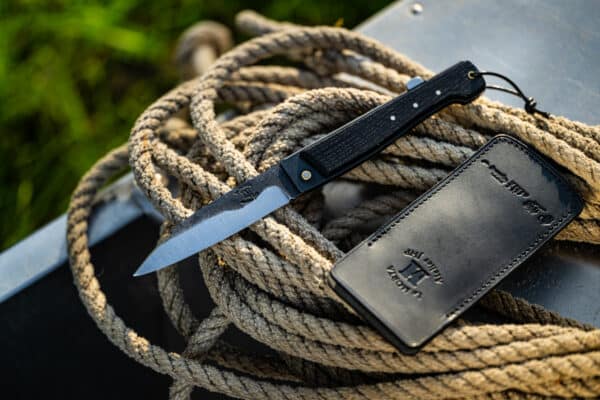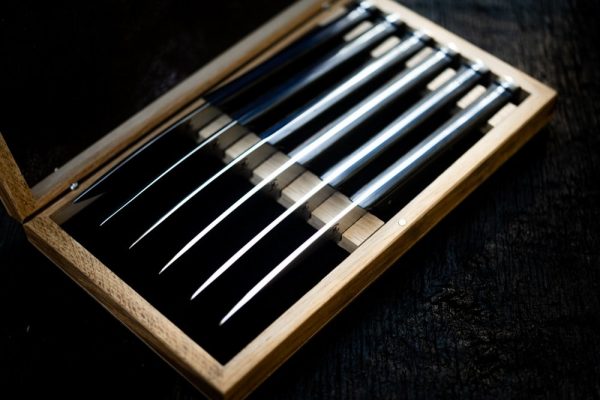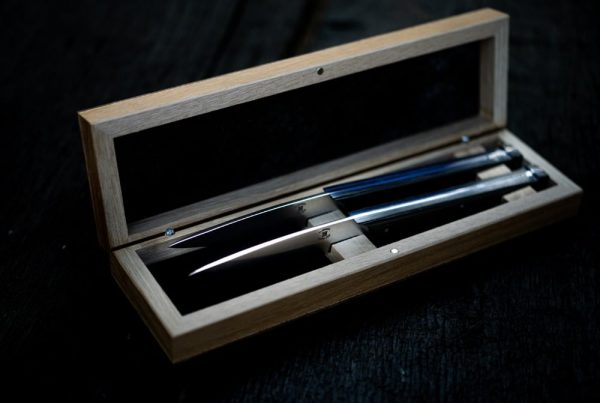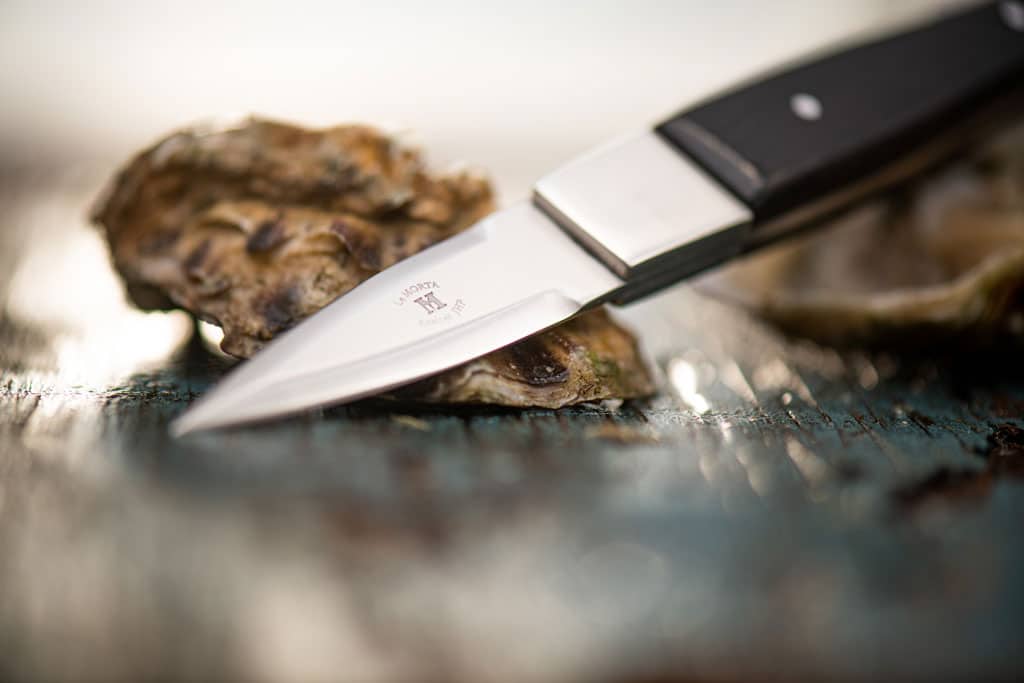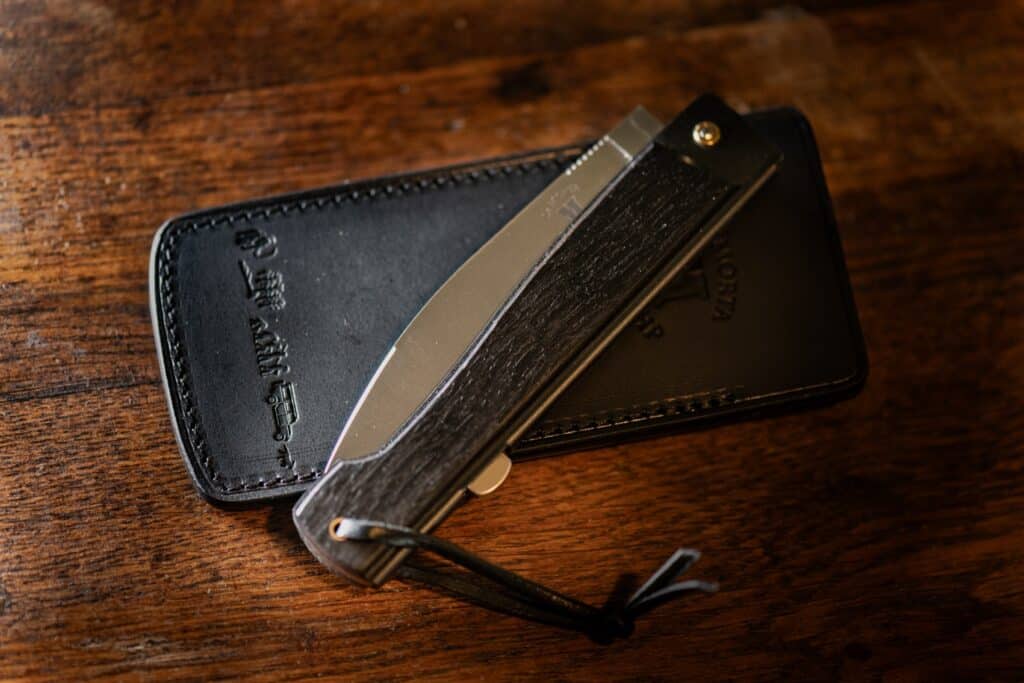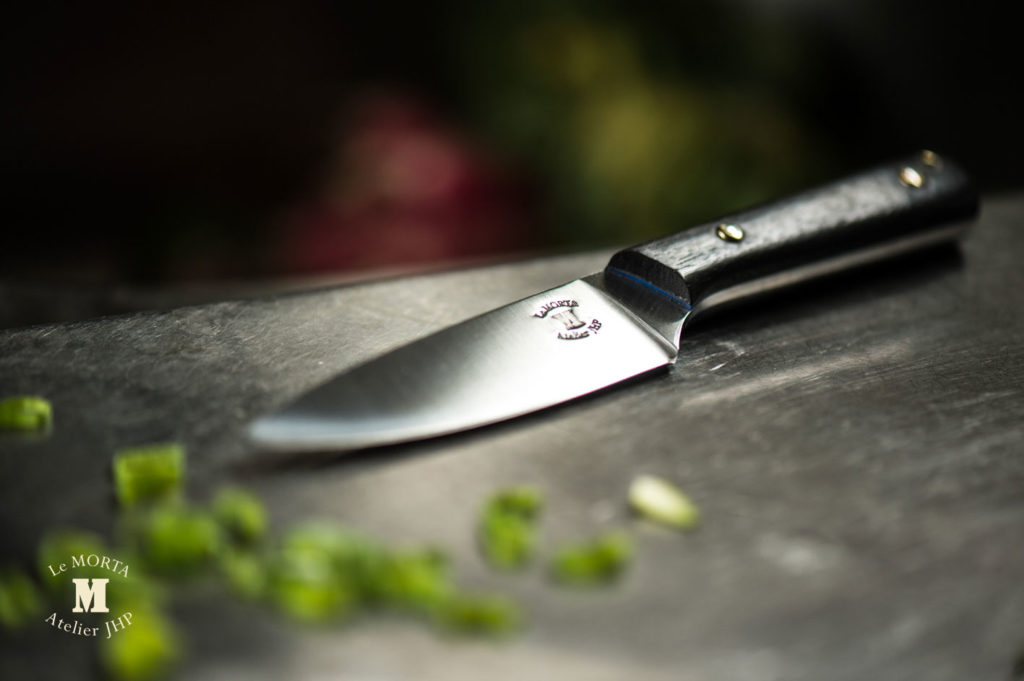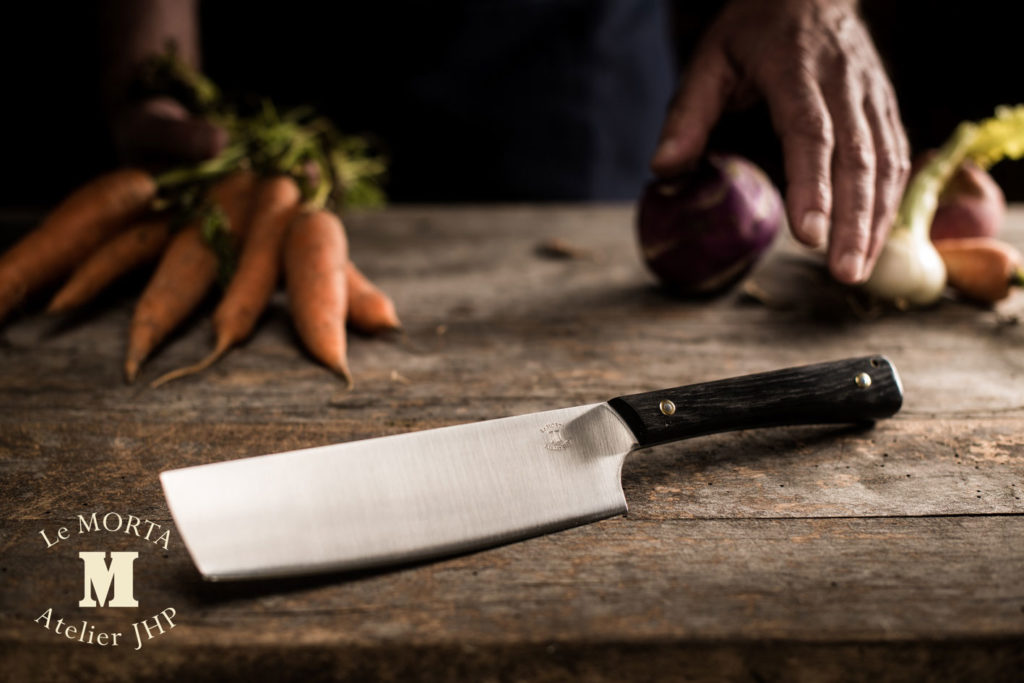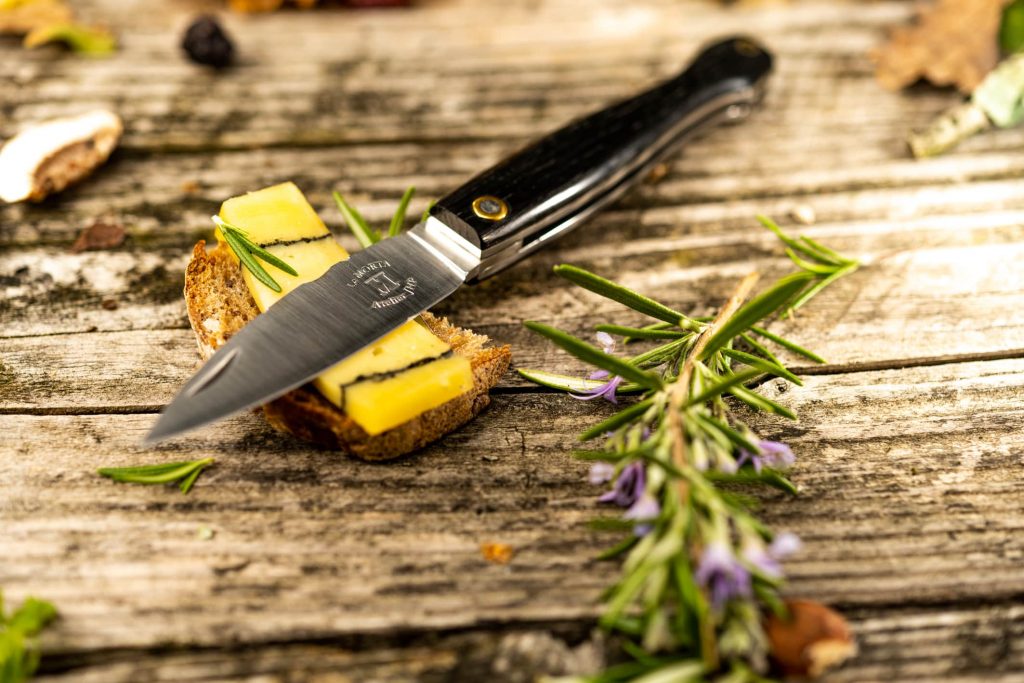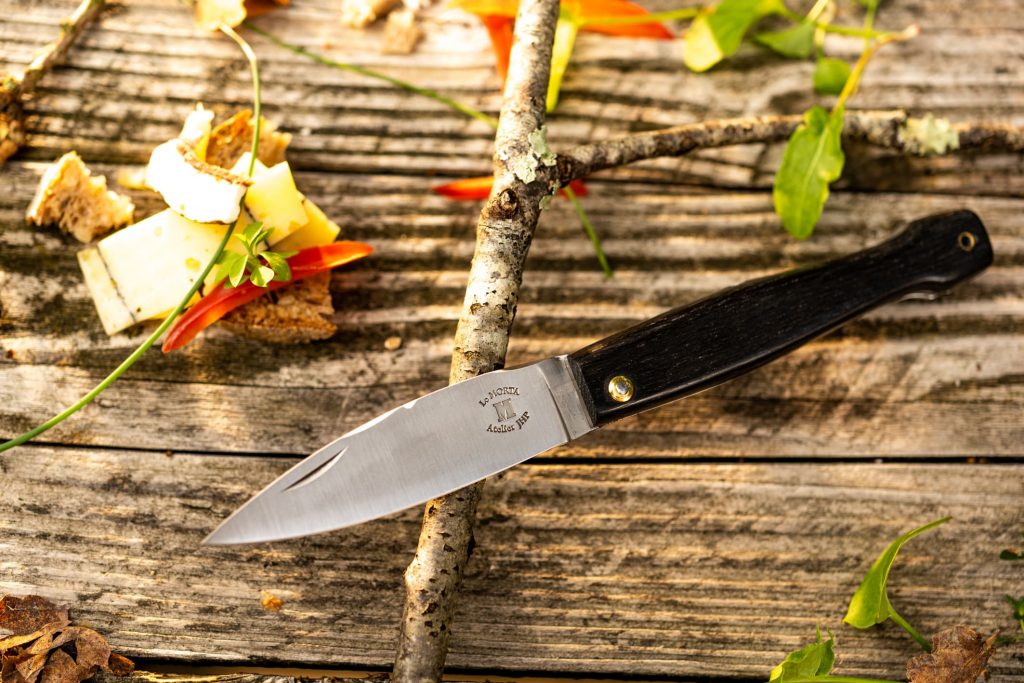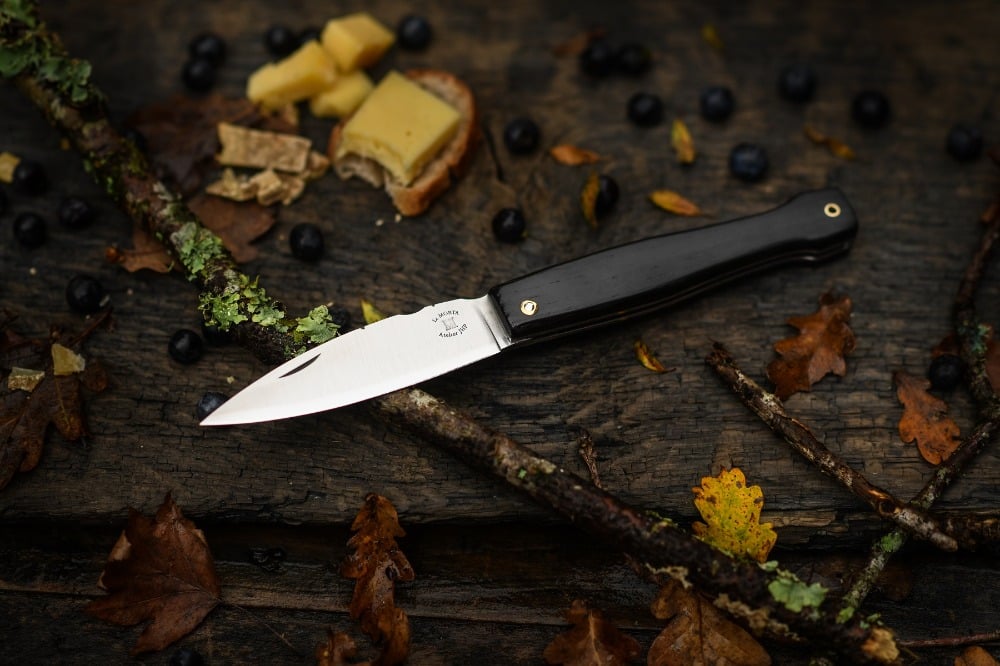Known by its Swedish metallurgist Sandvik, now Alleima, 14C28N steel is renowned for its excellence. Introduced in 2008 by metallurgy, this stainless alloy owes its performance to its composition and manufacturing process. Chromium, carbon, manganese, silicon, nitrogen, phosphorus, and sulfur form an unbeatable team in terms of hardness and corrosion resistance. Its exceptional sharpness, easy cleaning, and ease of sharpening make it a star in high-end cutlery. When the finest knife handles are adorned with the best blades, 14C28N steel is never far behind. Here’s a sharp portrait of this renowned steel.
14c28n steel: what are we talking about?
14C28N steel, an improved version of its predecessor 12C27, is celebrated for its remarkable edge retention and resistance. Three reasons explain its popularity:
Its composition: The secret of its performance
14C28N steel is a stainless alloy composed of:
- Iron (base of steel) ;
- 14.5% chromium ;
- 0.52% carbon ;
- 0.60% manganese ;
- 0.40% silicon ;
- 0.1% phosphorus ;
- 0.1% sulfur
These numbers may slightly vary by manufacturer. 📈
Manganese refines the steel grain, protecting it from cracks and splits that cause corrosion. These micro-fissures allow water to penetrate the steel structure, leading to rust.
Together with chromium and silicon, manganese enhances corrosion resistance, thereby improving steel durability.
Carbon increases blade hardness.
Phosphorus and sulfur improve machinability (ease of shaping).
Nitrogen (present at 0.11% in some manufacturers) homogenizes the structure and contributes to its resistance, with a higher content in 14C28N than in traditional stainless steels.
Its manufacturing process: The secret of its precision
14C28N steel is produced by powder metallurgy, mixing various alloy elements in powder form: chromium, nitrogen, manganese, silicon, phosphorus, and sulfur.
These are then compacted under high pressure and heated to become solid.
Surface treatment: The secret of its hardness
Thermal treatment (austenitization*) determines the steel’s hardness.
The steel is immersed in oil heated to 1050°C (1922°F). Thicker steel sheets stay longer in the bath—for instance, a 2.5 mm sheet remains for 5 minutes, whereas a 4 mm sheet stays for 12 minutes.
| 💡 * austenitization: heating of a steel part at a certain temperature for a given time to transform its entire crystallographic structure into austenite*. *austenite: micrographic constituent of steels containing a carbon solution. 💡 |
The steel is then cooled and ground to the desired shape.
Good to know 😉
A (rarer) alternative to powder metallurgy exists: “ingot casting”. No, not necessarily gold…
14C28N steel in cutlery: The advantages
Corrosion resistance
Manganese, chromium, and silicon help fight rust.
Metallurgists recommend it for its exceptional sharpness and resistance.
It performs well against:
- Corrosion (and rust) ;
- Wear ;
- Abrasion ;
- Humidity ;
- Bacteria and microorganisms in moist environments
The plus side 😉
Its ease of cleaning makes it compliant with hygiene standards for food use.
This explains its popularity among knife makers and chefs.
Hardness
14C28N steel offers the highest possible hardness without affecting the microstructure. At Morta Knives, 14C28N steel offers a hardness of 59 HRC on the Rockwell scale.
As we saw earlier, hardness depends on tempering time.
It is the steel’s perfect edge retention that gives it this hardness. In fact, it remains sharper for longer, a precious advantage in cutlery. Even under intensive use, 14C28N steel is not prone to chipping.
Ease of sharpening
Its excellent hardness facilitates stone sharpening, an advantage appreciated by chefs and other blade-loving gourmets. Critics will argue that it requires more sharpening than its carbon counterparts. And they’re right.
The harder the steel, the better it cuts, and the more patience you need to sharpen it, and vice versa.
Of course, quality and efficiency have to be earned, we would reply. In fact, that’s what we keep telling ourselves as we extract the Morta.
Sharpness
Its fine, durable sharpness ensures excellent cutting performance. Ask the steaks that have met our blades. 😉
And this sharpness? It helps with opening oysters too ? 🤔
Predominance over 12C27 steel
Although sanitary standards also declare it suitable for cutlery, 12C27 remains inferior to its elder brother, 14c28n.
12C27 steel is also annealed and cold-rolled. Its maximum hardness is 60 HRC. Alleima Sandvik, one of its manufacturers, describes it as a steel with “good resistance” to wear and “good resistance” to corrosion.
14C28N is rated “very good”. Congratulations!
Alleima reports good edge retention, compared to the high retention of 14C28N. He recommends the latter for better performance. At Couteaux Morta, we like the best.
14C28N steel: Knife blades and other applications
Cutlery: Official fan of 14C28N steel
Resistant to moisture and corrosion, 14C28N steel is ideal for outdoor use. It ensures perfect hygiene, essential for everyday use. Its users are looking for high performance.
The metalworkers note on their technical data sheet that “the 14C28N chromium stainless grade, whose chemical composition is optimized for the manufacture of high-quality professional knives, is ideal for kitchen knives. It is suitable for all types of blades: hunting, pocket, etc.”.
It’s frequently found in cutlery, especially in:
- Chef knives ;
- Folding knives, pocket knives for hiking or fishing ;
- Kitchen knives: paring knives
Cutting, slicing and chopping are the favorite activities of this unusual steel. Have you tried it yet? It’s a real treat when it comes to competitions for the best sausage cutter. The word of a gourmet cutler!
14C28N steel in toolmaking
This steel is also used in the toolmaking industry. It is used in the manufacture of :
- Domestic or professional scissors
- Tools for the aerospace industry
Some cutting instruments in the medical sector, such as surgical scissors in keratoplasty, are made of stainless steel and austenitic alloy.
Some commando corps are equipped with knives with 14C28N blades. Which category should they fall into: defense or manhunting 😉 ?
Other steels for Morta knife blades
Crude forged steel (90mcv8) hand-forged. Loaded with carbon, its blade develops a patina over time. The new born star in forged steel: the brut de forge back pump knife.
As with its 14c28n counterpart, a 304L steel axle ensures blade rotation.
The Damascus steel obtained from two steels (RWL34 and PMC 37) marvels at its random moiré reflections. Stainless, it combines beauty with efficiency.
I’m discovering the Damascus steel collection.
The Trappeur model opts for N690 steel and its remarkable mechanical properties.
Table knives feature X50CRMOV15 steel. A stainless steel composed of molybdenum and vanadium, it resists corrosion and wear for intensive use.
Steel and art for pleasure
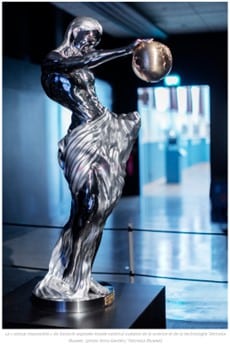
Metalworker Alleima (Sandvik Group) has created a statue in stainless steel. To raise the stakes, it opted for ISO M materials, which are notoriously difficult to machine, and worked them as in the aeronautics industry, while limiting waste.
The result: “The Impossible Statue” is now on display at the Swedish Museum of Science and Technology. The story doesn’t specify whether it’s 14C28N or another Sandvik steel, but the splendor of the object was well worth this paragraph.
Our readers, lovers of beautiful things, will appreciate the detour!
Photo credit: machinesproduction.fr
Sandvik steel: maintenance tips
As we have seen, 14C28N steel is highly resistant to corrosion. It is therefore easy to maintain. At Couteaux Morta, we recommend cleaning the blade with a soft, damp cloth after each use to ensure perfect hygiene and respect for the noble materials of your favorite knife.
There’s no need to blaspheme by mentioning dishwasher safe use 😈.
Dishwashing and other detergents, which are always a little abrasive, are kept to a minimum.
Even so, knife handles are often made from high-quality natural materials: horn, bone, wood, animal antler (deer antler), ivory. Fans of fine knives immediately add Morta to this non-exhaustive list 😉.
That’s why, while the blade accepts contact with water, it’s a different story for the knife handle.
Remember, the Morta lived 5,000 years buried in the damp peat of Brière, and now it longs for a life in the dry. We understand!
14C28N steel is the star of the cutlery range. Fans of fine blades recognize it by its perfection of sharpness, strength and hardness. What’s the best steel for a knife? That’s easy! The best steel is the steel of the knife you love. Isn’t that right, folks?
Article written by the sharp pen of Christelle Lorant. 🪶
FAQ – Article summary
What is 14C28N steel and why is it recommended for knife making?
14C28N is a stainless steel developed by Sandvik, a Swedish company now known as Alleima. This steel is renowned for its resistance to corrosion and its ability to maintain a sharp edge.
Designed specifically to meet the exacting demands of high-end cutlery, 14C28N steel combines hardness and resilience, providing a durable, easy-to-maintain blade.
Its balanced composition makes it ideal for kitchen knives, folding knives and other applications requiring a high-performance, reliable steel.
How does the composition of 14C28N steel contribute to its performance?
The specific composition of 14C28N steel, comprising 14.5% chromium, 0.52% carbon, and measured quantities of manganese, silicon, phosphorus, sulfur, and sometimes nitrogen, gives it a highly resistant and stable structure.
The chromium enhances its resistance to corrosion, while the carbon increases its hardness, enabling the blade to retain its edge longer.
Manganese and silicon improve wear and fracture resistance, while phosphorus and sulfur enhance the steel’s machinability.
Nitrogen, used by some manufacturers, evens out the steel’s structure and further improves its strength.
What is the manufacturing process for 14C28N steel, and what makes it unique?
14C28N steel is manufactured by powder metallurgy, a state-of-the-art method that enables precise distribution of the alloying elements. The process begins by mixing alloy powders, compacting them under high pressure and then heating them to fuse them into a solid block.
This technique ensures exceptional material quality and uniformity, resulting in a blade with highly precise mechanical properties and excellent corrosion resistance.
Why is 14C28N steel ideal for cutlery applications such as kitchen knives and folding knives?
The properties of 14C28N steel, such as its high hardness, corrosion resistance and ability to maintain a sharp edge, make it ideally suited for kitchen knives and folding knives used outdoors.
Its ease of maintenance and sharpening meets the requirements of professionals and knife enthusiasts alike, guaranteeing superior cutting performance and long-term durability, even under intensive use conditions.
What maintenance is recommended to preserve the qualities of 14C28N steel?
To maintain the optimum performance and corrosion resistance of 14C28N steel, we recommend cleaning the blade with a soft, damp cloth after each use. It is important to avoid the dishwasher and minimize the use of abrasive cleaners to protect the blade.
Knife handles, made from natural materials, also require special care to avoid prolonged exposure to moisture.
How does 14C28N steel outperform its predecessor, 12C27?
Although 12C27 is also a stainless steel renowned for its good performance, 14C28N outperforms it in terms of edge retention, corrosion resistance and hardness.
This translates into a significant improvement in durability and cutting performance, making 14C28N the preferred choice for applications requiring superior quality and reliability.
What other steels are considered alternatives to 14C28N for knife manufacture?
In addition to 14C28N, other steels such as brut de forge (90mcv8), known for its unique patina, Damascus steel for its aesthetic beauty and N690 steel for its superior mechanical properties, are popular alternatives.
X50CRMOV15 steel is also used in table knives for its resistance to corrosion and wear, suitable for intensive daily use.

